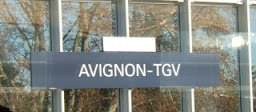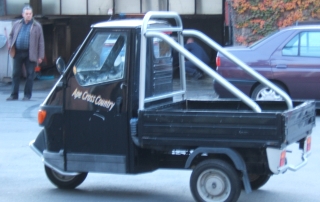Anxious car owners had already moved their cars up and away from danger and they watched from above as the flood inched its way over the gravel surface until the whole area was covered.
Thursday 31 December 2009
Lupi New Year
Anxious car owners had already moved their cars up and away from danger and they watched from above as the flood inched its way over the gravel surface until the whole area was covered.
Saturday 19 December 2009
Christmas in Italy
Whilst I was out on a stroll the other day, a few miles down the road in the village of Serro, I happened to glance up just as Santa was nipping into someone's house to leave some presents. The chances of catching him 'on the job', so to speak, must be very slim so I am rightly proud of this picture. The poor man had clearly started early and was working overtime, delivering in daylight, so rather than embarrass him I left him to it and walked on.
Tuesday 15 December 2009
Wounded knee mountain
Saturday 12 December 2009
Death and breasts in Lyon

Meanwhile back at the home of our hosts, Guy and Noëlle a deadly drama was being played out. A lone turtledove, one of many who share the garden with the hens, the tractors and the various assorted bits of machinery, was in full flight trying to avoid becoming dinner for a hawk, a kestrel we think. Diving towards a dark hole in its effort to escape, the dove failed to detect the window glass and with its hunter being so close behind, sadly both birds impacted with shocking thuds. The window glass survived intact but both birds fell to the ground instantly dead. Remarkably the bodies were almost unmarked externally, both birds' eyes closed and wings folded as if asleep. Inside the house the noise of the double blows had been loud and shocking, frightening until the explanation became clear and then exciting, something so rare and bizarre had occurred that required the birds' bodies to be posed for photos and emailed to relations abroad. Readers of this blog are saved this.
Maybe the same could be said of the Papamobile, as used by the late Pope John-Paul when he went on his holidays. Unlike with Hitler's car, Kate was prepared to stand proudly next to this one. Of all the exhibits at this motor museum, however, our favourite of all was the 'Tue Belle-Mere', a three-wheel motorised tricycle designed with an open basket right up front for the mother-in-law to sit in whilst her loving relatives drove safely from behind. For those not fluent in French, 'Tue Belle-Mere' roughly translates as 'mother-in-law killer'.
The 3-hour delay on our journey back showed that even French railways can be less than perfect at times but none of this really mattered as we were warm and comfortable, the sun shone for us and we had been heavily pre-loaded with pieces of a delicious savoury tart cooked by Noëlle. We arrived back to a cooler Torri, the air feeling damp in the evening as the dew falls. This, so we have discovered, is typical of the place, something the locals refer to as 'umido' meaning damp, but which is really little more than moisture condensing out of the warmer air as it is cooled by the river in the valley bottom. We console ourselves that the shortest day of the year is almost with us and after this the sun will arrive earlier each day in our bedroom window.









